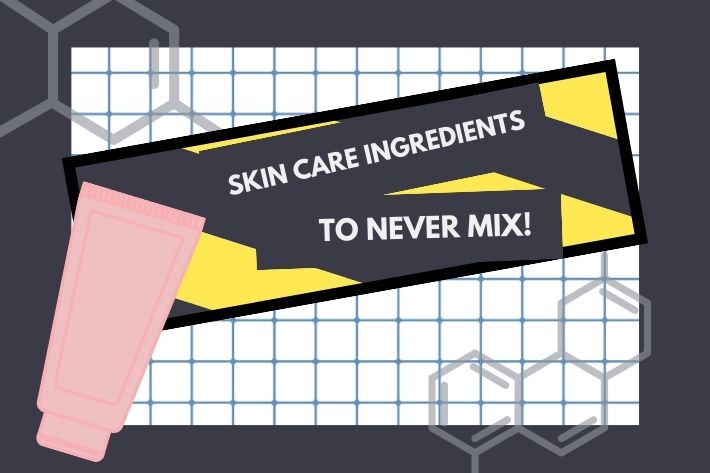Estimated Reading Time: 2 minutes
Some things are just not meant to be together, and this applies in the world of skin care too. We all want beautiful, clear and glowing
skin, and sometimes we try anything and everything – from hyped ingredients to a trending skin care routine − without a second thought. One may assume that layering skin care products would amp up their potency and provide faster results, but some combinations can be detrimental to skin if not applied properly.
Some skin care ingredients just don’t get along when combined. They can potentially irritate skin or cancel out the products’ benefits. Avoid concocting a recipe for disaster by getting the lowdown on skin care ingredients you shouldn’t mix.

Acids (AHA and BHA) and Niacinamide
Chemical exfoliators like AHA and BHA remove dirt, impurities and excess sebum clogged in pores. On a pH level, they range from 3.0 to 4.0. On the other hand, niacinamide is a less acidic substance with a pH level at roughly 5.0-7.0. This skin-brightening ingredient improves skin texture and evens skin tone. Combining acids with niacinamide might counteract the effects of the ingredients due to the different pH levels. Niacinamide potentially neutralizes the acidity of AHA and BHA, lessening the skin’s ability to absorb the acids, while a lower pH may turn niacinamide into niacin (a Vitamin B3 derivative that can skin flushing). Some products are formulated for these ingredients to work together. Otherwise, it’s probably best to use them at different times of day, or to leave adequate time between applications.
Acids (AHA and BHA) and Vitamin C
Vitamin C is an antioxidant that protects skin from damaging free radicals caused by UV rays. It can also reduce hyperpigmentation and promote collagen production. When combined with acids like AHA and BHA, however, you’re asking for trouble. Excessive skin irritation may occur, for example. Additionally, the acidic ingredients may affect the pH of Vitamin C, destabilizing the latter and rendering this nutrient inactive. When using both acids and Vitamin C, use Vitamin C in the morning and the acids in the evening.
Benzoyl Peroxide and Vitamin C
For those with acne-prone skin, benzoyl peroxide is a friendly suitor as it kills bacteria under the skin’s surface, and removes dead skin cells and excess sebum. This acne-fighter is an organic acid that can dry and irritate skin. Avoid pairing it with Vitamin C. When mixed together, benzoyl peroxide cancels out the benefits of Vitamin C by oxidizing this nutrient. If you must use both ingredients, use Vitamin C in the morning and benzoyl peroxide at night.
Retinol and Acids (AHA and BHA)
Do yourself a favor and avoid desert-dry skin by separating retinol from other acids in your skin care routine. Retinol is mainly used to reverse signs of aging by increasing skin cell turnover and stimulating collagen production. It also exfoliates skin, as do AHAs and BHAs. When mixed together, this concoction may over-dry skin, leading to extra irritated and sensitive skin.
Retinol and Benzoyl Peroxide
Combining skin-drying ingredients benzoyl peroxide and retinol will lead to disappointing results – they cancel each other out when used together. A worst case scenario is that your skin becomes excessively dry, resulting in peeling, flaking and even blistering.
Retinol and Vitamin C
Retinol and Vitamin C mixed together is like trying to do everything all at once but not getting much done in the end. For optimal absorption of Vitamin C, skin needs to be at a low pH level, whereas retinol requires a higher pH level. Instead of using them at the same time, alternate between morning and evening routines. Vitamin C thrives during the day as an antioxidant to help protect skin from sun damage, while retinol works best at night when skin is in repair mode.
*While it’s noted to avoid mixing the aforementioned ingredients together on your own, there are products formulated to work with these ingredients combined.
RELATED:
- Skin Care Ingredients You Shouldn’t Mix
- What Does Skin Purging Look Like and How to Treat It
- What Are the Best Makeup Trends for Fall 2021?







